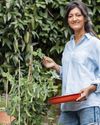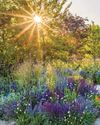
I was brought up in the deep shadow of World War Two. Like so many veterans, my father, who fought every day of the six years of war, being blown up at Dunkirk, joining the new Commandos and finishing up in the Burmese jungle, never spoke about it. But he was prone to deep depressions and violent rages and the only time he ever seemed to be truly at ease with the world was when he was with other veterans.
By the time I came along – 10 years after he came out of the jungle – I was fed a diet of comic-book heroes and films and the enduring myth of this plucky, sceptred isle holding out against the dastardly Hun. But certain songs would come on the radio and fill the room with a sadness so deep that even I, a small child, could sense my parents forcibly holding back their emotions. The voice of Kathleen Ferrier was always a trigger but I particularly recall Marlene Dietrich singing Where Have All The Flowers Gone?, opening a window onto a profound, inconsolable grief.
Well, my parents have themselves gone to the graveyard, long time ago. There is hardly anyone left alive now to remember the war and my garden is filled with flowers. Wounds have healed. My generation has known unprecedented peace and prosperity although it seems, for all our good fortune, we have not learned very much. But where have all the pollinators gone? We gardeners have been exhorted to “plant for pollinators” and many of us have done so, thinking that we were both doing our bit for ecology as well as making beauty, in the process. But the alarm bells are ringing among those that monitor these things and should be sounding loud and clear for all of us, because pollinator numbers are dangerously low and falling.
Going, going, gone...
This story is from the {{IssueName}} edition of {{MagazineName}}.
Start your 7-day Magzter GOLD free trial to access thousands of curated premium stories, and 9,000+ magazines and newspapers.
Already a subscriber ? Sign In
This story is from the {{IssueName}} edition of {{MagazineName}}.
Start your 7-day Magzter GOLD free trial to access thousands of curated premium stories, and 9,000+ magazines and newspapers.
Already a subscriber? Sign In

A new plot for tasty crops
Taking on a new allotment needn't be hard work. By simply following a few easy tips you can have bumper crops in no time, just like Alessandro Vitale

We love July
July is an island floating between the joy of June and the slightly fatigued month of August. It's a grown-up month: the year has shrugged off its adolescent exuberances, the weather is (hopefully) warm enough for ice cream to be one of your five a day, the sea should be swimmable without (too much) danger of hypothermia and thoughts will be of holiday shenanigans and family barbecues. School's out this month, the next tranche of glorious summer colour is washing across our borders and it's my birthday. Lots of reasons to give three rousing cheers for July!

YOUR PRUNING MONTH
Now, at the height of summer, Frances Tophill shows how to boost your plants' health and productivity with a timely cut

Hassle-free harvests
Flowers are out in abundance this month and for Jack Wallington, many of these blooms make delicious, low-effort pickings

Bite-sized bounties
Glorious doorstep harvests can easily turn into gluts, so let Rukmini Iyer's recipes help you savour every last bit

Upcycled outdoor living
Create unique and stylish garden features for minimal cost using reclaimed materials and simple DIY skills. Helen Riches shares four step-by-step projects and more inspiring eco tips

Secrets of a COLOURFUL GARDEN
Buildings and landscapes can play a vital role in supercharging your space, as Nick Bailey demonstrates

Greening up a city balcony
Looking for sustainable, small-space gardening ideas? Take inspiration from Oliver Hymans' transformed balcony garden in north-east London - now a lush, green haven for humans and wildlife

The dry and mighty garden
As we adapt our gardens to a more volatile climate, Alan Titchmarsh reveals how to create a drought-tolerant plot and picks his top plant performers

Nature knows best
Carol Klein explains how to choose plants for specific growing conditions, based on what has naturally adapted to thrive there